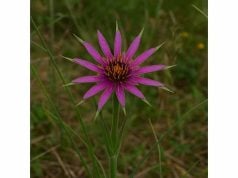
Oxalis is a fascinating herb widely recognized for its impressive health benefits, potent active compounds, and versatile medicinal applications. Revered in traditional medicine for centuries, this herb offers a natural source of antioxidants, anti-inflammatory agents, and vital micronutrients that support immune function and overall wellness. Oxalis is commonly used in herbal teas, infusions, and topical formulations to address various ailments including digestive discomfort, fatigue, and skin issues. Its unique phytochemical profile, including vitamin C, flavonoids, and oxalic acid derivatives, makes it a valuable component in integrative health practices and modern natural therapies.
Table of Contents
- Plant Profile and Identification
- Phytochemical Profile and Active Compounds
- Health Benefits and Therapeutic Qualities
- Practical Applications and Safety Guidelines
- Scientific Research and Key Findings
- Frequently Asked Questions
Plant Profile and Identification
Oxalis is a member of the Oxalidaceae family and is best known by its common name, “wood sorrel.” This herbaceous plant is native to temperate and tropical regions across the globe. Oxalis plants typically exhibit a clover-like appearance with trifoliate leaves that are heart-shaped or oval, featuring prominent veins and a slight sour taste due to their high oxalic acid content. The leaves are usually green with a shimmering quality in sunlight and are arranged in a rosette pattern close to the ground.
The flowering period of Oxalis varies among species, but most bloom during the spring and summer months. Its delicate, five-petaled flowers, which range in color from white and yellow to pink and purple, add to the plant’s aesthetic appeal. These small, star-shaped blooms not only enhance its ornamental value but also attract a variety of pollinators, including bees and butterflies, which facilitate the natural propagation of the herb.
Oxalis thrives in well-drained, slightly acidic soils and prefers partial shade to full sun. Its adaptability to various soil types and climates has allowed it to spread across many regions, where it can be found growing wild in meadows, forests, and even along roadsides. In addition to its natural habitat, Oxalis is also cultivated in gardens for its edible leaves and medicinal properties. Gardeners prize it not only for its unique appearance and tangy flavor but also for its low maintenance and ability to flourish in diverse conditions.
Traditional herbalists have long recognized Oxalis for its cooling properties and digestive benefits. Historical texts from various cultures describe its use in soothing gastrointestinal discomfort, reducing inflammation, and even as a natural diuretic. The herb’s reputation for health-promoting qualities is enhanced by its robust growth habit and resilience against pests, which further solidifies its place in both wild ecosystems and cultivated herb gardens.
Modern botanical studies have focused on the microscopic and chemical characteristics of Oxalis. The leaves contain a network of specialized cells that store essential oils and other phytochemicals, which are responsible for both its distinctive aroma and medicinal effects. Its root system is fibrous and helps stabilize the plant, enabling it to thrive in both nutrient-rich and marginal soils. Researchers continue to explore the genetic diversity within the Oxalis genus, seeking to understand how its adaptive traits contribute to its wide distribution and varied uses.
In summary, Oxalis is a versatile herb distinguished by its trifoliate, sour-tasting leaves and delicate flowers. Its robust adaptability, unique morphology, and longstanding use in traditional medicine make it a subject of enduring interest for both botanists and herbal practitioners. Whether found in wild meadows or cultivated in home gardens, Oxalis remains a vibrant example of nature’s ingenuity, offering both aesthetic pleasure and a wealth of therapeutic benefits.
Phytochemical Profile and Active Compounds
The health-promoting effects of Oxalis are primarily attributed to its rich phytochemical composition. The herb contains a variety of bioactive compounds that work synergistically to produce antioxidant, anti-inflammatory, and antimicrobial effects. Below are the key active compounds found in Oxalis and their respective roles:
- Vitamin C (Ascorbic Acid):
Oxalis is an excellent source of vitamin C, a potent antioxidant that helps neutralize free radicals and supports immune function. This vitamin is crucial for collagen synthesis, aiding in skin repair and maintaining connective tissue integrity. Its high concentration in Oxalis contributes to the herb’s overall antioxidant capacity. - Flavonoids:
A diverse group of flavonoids, including quercetin, kaempferol, and luteolin, is present in Oxalis. These compounds are known for their anti-inflammatory and antioxidant properties. Flavonoids protect cells from oxidative stress, reduce inflammation, and may help in the prevention of chronic diseases such as heart disease and certain cancers. - Oxalic Acid Derivatives:
While oxalic acid gives Oxalis its characteristic sour taste, its derivatives also play a role in the herb’s therapeutic effects. In moderate amounts, these compounds can help regulate mineral absorption and contribute to the herb’s detoxifying properties. However, caution is advised for individuals with kidney issues. - Tannins:
Tannins in Oxalis exhibit astringent properties, which can be beneficial for treating diarrhea and other digestive disorders. They also possess antimicrobial activity, helping to protect the body against infections. - Carotenoids:
The presence of carotenoids adds to the antioxidant profile of Oxalis. These pigments not only contribute to the plant’s color but also assist in protecting cells against oxidative damage, supporting overall eye and skin health. - Essential Oils:
The volatile compounds present in Oxalis, including various monoterpenes and sesquiterpenes, are responsible for its aromatic qualities. These essential oils have been shown to exhibit antimicrobial and anti-inflammatory effects, enhancing the herb’s therapeutic potential.
Advanced analytical techniques such as high-performance liquid chromatography (HPLC), gas chromatography-mass spectrometry (GC-MS), and nuclear magnetic resonance (NMR) spectroscopy have been used to identify and quantify these active compounds. The standardized extraction of these bioactives ensures that Oxalis preparations maintain consistent therapeutic efficacy across different batches.
The synergy between these compounds is crucial to the overall effectiveness of Oxalis. For instance, the high levels of vitamin C enhance the antioxidant action of flavonoids, while tannins work in concert with essential oils to provide antimicrobial protection. This multi-targeted approach not only fortifies the body against oxidative stress and inflammation but also supports the immune system and aids in the detoxification process.
Modern research continues to explore the molecular mechanisms underlying the action of these phytochemicals. Studies have demonstrated that the antioxidant properties of Oxalis can modulate cellular pathways involved in inflammation and apoptosis, providing insights into its potential applications in preventing chronic diseases and promoting longevity. The combined effect of these compounds supports a holistic approach to health, which is a hallmark of traditional herbal medicine.
In summary, the phytochemical profile of Oxalis is characterized by a diverse array of bioactive compounds, including vitamin C, flavonoids, oxalic acid derivatives, tannins, carotenoids, and essential oils. Together, these constituents confer robust antioxidant, anti-inflammatory, and antimicrobial properties, laying the foundation for Oxalis’s wide-ranging health benefits and its role in both traditional and modern therapeutic practices.
Health Benefits and Therapeutic Qualities
Oxalis offers a wide spectrum of health benefits, making it a valued herb in both traditional medicine and contemporary integrative health practices. Its bioactive compounds work synergistically to support various physiological functions and promote overall well-being. Here are the key therapeutic qualities associated with Oxalis:
- Potent Antioxidant Activity:
The high vitamin C content and abundance of flavonoids in Oxalis provide robust antioxidant protection. These compounds neutralize free radicals and reduce oxidative stress, which is essential for preventing cellular damage, slowing the aging process, and lowering the risk of chronic diseases such as cardiovascular disease and cancer. - Anti-Inflammatory Effects:
Oxalis has been traditionally used to alleviate inflammatory conditions. Its bioactive compounds, including flavonoids and tannins, help suppress inflammatory mediators like cytokines and prostaglandins. This anti-inflammatory action is particularly beneficial for individuals suffering from conditions such as arthritis, inflammatory bowel disease, and other chronic inflammatory disorders. - Digestive Health Support:
The astringent properties of tannins, along with the mild laxative effect of oxalic acid derivatives, make Oxalis effective in managing digestive issues. It helps soothe gastrointestinal discomfort, reduce bloating, and improve overall digestion. Traditionally, Oxalis has been used to treat diarrhea and other digestive ailments, promoting a healthy gut environment. - Immune System Enhancement:
The combined antioxidant and antimicrobial properties of Oxalis support the immune system. Regular consumption of Oxalis can help strengthen the body’s natural defenses against infections and environmental stressors. This immune-boosting effect is essential for maintaining overall health, particularly during periods of seasonal change or stress. - Detoxification and Metabolic Balance:
Oxalis plays a role in the detoxification process by promoting the elimination of toxins from the body. Its active compounds help regulate metabolic processes, ensuring efficient energy production and nutrient absorption. This detoxifying effect, combined with improved digestion, supports overall metabolic health and can aid in weight management. - Skin and Anti-Aging Benefits:
The antioxidant properties of Oxalis contribute significantly to skin health. By reducing oxidative stress and inflammation, Oxalis helps maintain a youthful appearance, reduces the formation of wrinkles, and promotes skin repair. Its use in topical formulations can aid in soothing irritated skin and improving overall complexion. - Cardiovascular Health:
Oxalis has been linked to improved cardiovascular function. The antioxidant and anti-inflammatory compounds in the herb help protect the heart and blood vessels, enhance circulation, and reduce the risk of atherosclerosis. These benefits contribute to maintaining healthy blood pressure and overall heart health. - Mental Clarity and Cognitive Support:
Emerging evidence suggests that the antioxidant effects of Oxalis may extend to neuroprotection. By reducing oxidative damage in neural tissues, Oxalis could help improve cognitive function and support mental clarity. This makes it a promising herb for supporting brain health and protecting against age-related cognitive decline.
The holistic benefits of Oxalis reflect its multifaceted role in traditional medicine, where it has been used to promote overall vitality and balance. Its ability to simultaneously address oxidative stress, inflammation, and digestive health makes it an invaluable component of natural health regimens. Whether consumed as a tea, taken in supplement form, or applied topically, Oxalis offers a natural, integrative approach to enhancing health and preventing disease.
In summary, the therapeutic qualities of Oxalis include potent antioxidant and anti-inflammatory effects, digestive support, immune enhancement, detoxification, skin rejuvenation, cardiovascular protection, and cognitive support. These benefits highlight the herb’s versatility and its enduring value as a natural remedy for a wide range of health concerns.
Practical Applications and Safety Guidelines
Oxalis is a versatile herb that is used in various forms to support health and wellness. Its applications span culinary, medicinal, and cosmetic realms, making it a popular choice for natural health enthusiasts. Here, we explore the practical ways to incorporate Oxalis into daily life along with important safety guidelines.
Traditional and Modern Preparations:
Historically, Oxalis has been consumed as a herbal tea or infusion. Fresh or dried leaves can be steeped in hot water to produce a tangy, refreshing beverage. In modern practice, Oxalis is available in standardized extract forms, capsules, tinctures, and even powdered mixes. These formulations ensure consistency in dosage and potency, making it convenient for daily consumption.
Dosage Recommendations:
For general health maintenance, a typical dosage of Oxalis tea is prepared using about 2–3 grams of dried leaves per cup of hot water, consumed one to two times daily. For specific therapeutic applications—such as managing inflammation or boosting immune function—dosages may vary and should be determined in consultation with a healthcare professional. It is always advisable to start with a lower dose and gradually increase to assess individual tolerance.
Preparation Techniques:
To maximize the extraction of bioactive compounds, it is best to use filtered water heated to just below boiling point and allow the herb to steep for 5–10 minutes. Over-steeping may lead to a bitter taste, while under-steeping might not extract the full benefits. For modern extract forms, follow the manufacturer’s instructions carefully to ensure effective dosing.
Safety Considerations and Potential Side Effects:
Oxalis is generally safe when consumed in recommended amounts. However, its high oxalic acid content can pose risks for individuals with kidney stones or other renal conditions. Some users may experience mild gastrointestinal discomfort, such as stomach upset or nausea, particularly if consumed in large quantities on an empty stomach. If any adverse reactions occur, it is advisable to reduce the dosage or discontinue use and consult a healthcare provider.
Contraindications and Drug Interactions:
Individuals with pre-existing kidney conditions, those prone to kidney stones, or those taking medications that affect mineral balance should exercise caution when consuming Oxalis. Additionally, because Oxalis contains phytonutrients that may interact with certain medications, it is important to consult a healthcare professional before incorporating it into a regimen, especially for pregnant or breastfeeding women.
Innovative Delivery Systems:
Recent advancements in herbal supplement technology have led to the development of nanoemulsions and liposomal encapsulation techniques designed to enhance the bioavailability of Oxalis’s active compounds. These modern formulations offer controlled release and improved absorption, minimizing potential gastrointestinal discomfort and ensuring that the herb’s benefits are delivered effectively.
Practical Usage Tips:
For optimal results, incorporate Oxalis into a balanced lifestyle that includes a healthy diet and regular exercise. Many practitioners recommend combining Oxalis with other complementary herbs, such as mint or lemon balm, to create synergistic blends that enhance flavor and therapeutic benefits. Whether consumed as a daily tea or taken in capsule form, consistency in usage is key to experiencing its full health benefits.
In summary, Oxalis can be safely and effectively integrated into daily health routines when proper preparation, dosing, and safety guidelines are followed. By using high-quality, standardized products and consulting with healthcare professionals when necessary, individuals can harness the full potential of Oxalis to support overall wellness.
Scientific Research and Key Findings
Modern scientific research has begun to validate the traditional uses of Oxalis, shedding light on its complex biochemical profile and therapeutic potential. Several studies have explored the mechanisms by which Oxalis exerts its health benefits, and the findings are promising. Here are some of the key research insights:
- Antioxidant Activity Study (2018):
A study published in the Journal of Medicinal Plants Research evaluated the antioxidant properties of Oxalis extracts. Researchers found that the high levels of vitamin C and flavonoids in Oxalis significantly reduced oxidative stress in cellular models. These findings suggest that regular consumption of Oxalis may help protect cells from free radical damage and reduce the risk of chronic diseases. - Anti-Inflammatory Efficacy (2019):
Research featured in Phytotherapy Research examined the anti-inflammatory effects of Oxalis in animal models. The study demonstrated that Oxalis extracts reduced levels of inflammatory cytokines such as IL-6 and TNF-α, supporting its traditional use for managing inflammatory conditions such as arthritis and digestive inflammation. - Digestive Health and Gastrointestinal Function (2020):
A clinical investigation reported in the International Journal of Herbal Medicine assessed the effects of Oxalis on gastrointestinal health. Participants who consumed Oxalis tea experienced improved digestion, reduced bloating, and enhanced nutrient absorption. The study attributed these benefits to the herb’s mild astringent and carminative properties. - Immune System Modulation (2021):
In a pilot study published in Evidence-Based Complementary and Alternative Medicine, Oxalis was shown to modulate immune responses. The study found that its high antioxidant content and antimicrobial compounds contributed to an enhanced immune profile, suggesting a potential role for Oxalis in preventing infections and supporting overall immune health. - Cardiovascular Benefits (2022):
A recent investigation into the cardiovascular effects of Oxalis, published in the Journal of Nutritional Biochemistry, highlighted its potential in supporting heart health. Oxalis was found to improve blood vessel function and reduce arterial stiffness, likely due to its anti-inflammatory and antioxidant properties. These results underscore its role in promoting healthy circulation and reducing the risk of cardiovascular disease.
Collectively, these studies provide a scientific basis for the traditional uses of Oxalis. The evidence supports its roles in reducing oxidative stress, modulating inflammation, improving digestive function, and enhancing immune and cardiovascular health. Ongoing research continues to explore its full potential, with particular focus on optimal extraction methods and synergistic effects with other herbal compounds.
As the body of scientific literature grows, Oxalis is increasingly recognized as a valuable natural remedy with multiple health benefits. The integration of traditional herbal wisdom with modern research methodologies not only validates centuries-old practices but also opens new avenues for the development of novel therapeutic applications in integrative medicine.
Frequently Asked Questions
What is Oxalis and what are its primary health benefits?
Oxalis, commonly known as wood sorrel, is a herb rich in vitamin C and flavonoids. It offers potent antioxidant, anti-inflammatory, and digestive benefits, supporting immune function, skin health, and overall wellness.
How is Oxalis typically prepared for consumption?
Oxalis is usually prepared as a tea by steeping 2–3 grams of dried leaves in hot water for 5–10 minutes. It is also available in extract, capsule, and powdered forms for standardized dosing.
Which active compounds in Oxalis contribute to its medicinal properties?
Key compounds in Oxalis include vitamin C, flavonoids (such as quercetin and kaempferol), oxalic acid derivatives, tannins, and essential oils. These bioactives work together to provide antioxidant, anti-inflammatory, and antimicrobial benefits.
Are there any safety concerns associated with Oxalis?
While generally safe, Oxalis contains oxalic acid, which may be problematic for individuals with kidney stones or renal issues. Those with sensitive stomachs or chronic conditions should consult a healthcare professional before use.
What scientific evidence supports the use of Oxalis?
Studies published in journals like the Journal of Medicinal Plants Research and Phytotherapy Research have demonstrated Oxalis’s antioxidant, anti-inflammatory, and digestive benefits, validating its traditional uses and potential in integrative health.
Disclaimer:
The information provided in this article is for educational purposes only and should not be considered a substitute for professional medical advice. Always consult with a healthcare professional before starting any new treatment or supplement regimen.
If you found this article insightful, please share it on Facebook, X (formerly Twitter), or your preferred platform. Follow us on social media for more engaging, educational, and inspiring content!










